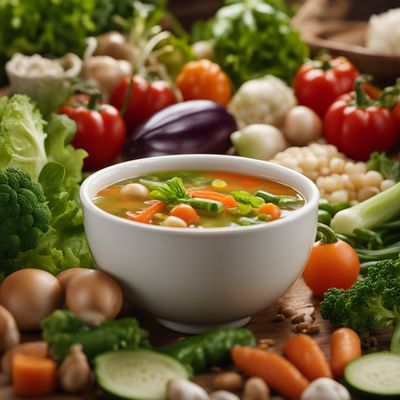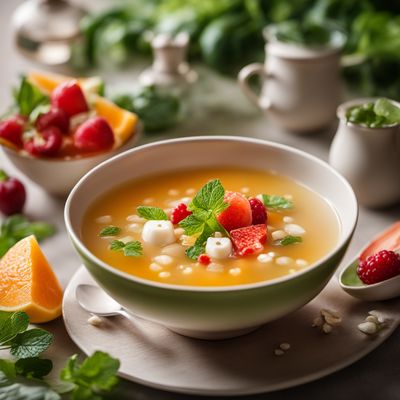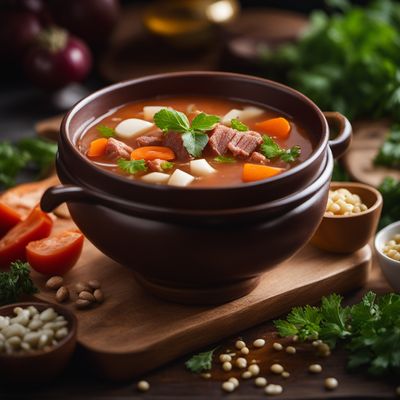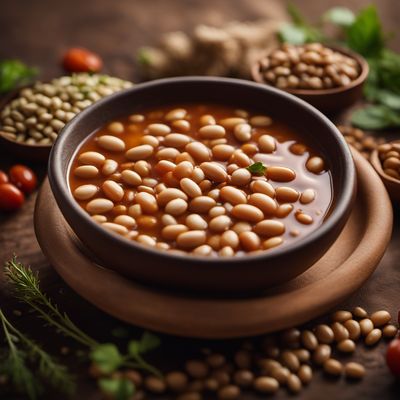
Ingredient
Fish soup, dry
Savory Delight: Exploring the World of Dry Fish Soup
Dry fish soup is made by drying and grinding fish into a fine powder, resulting in a concentrated flavor bomb. It has a distinct aroma that is both savory and slightly briny. The powder is usually light brown in color and has a fine texture. When rehydrated, it transforms into a thick and flavorful broth that enhances the taste of any dish it is added to. Its concentrated nature allows for easy storage and long shelf life.
Origins and history
The use of dry fish soup can be traced back to ancient civilizations, where drying fish was a common preservation method. This technique allowed people to have a readily available source of protein during times when fresh fish was scarce. Over time, the practice of drying fish and using it in soups and stews spread across different cultures and regions, becoming an integral part of their culinary traditions.
Nutritional information
Dry fish soup is a rich source of protein, vitamins, and minerals. It is low in fat and calories, making it a healthy addition to various dishes.
Allergens
Dry fish soup may contain allergens such as fish and shellfish. Individuals with seafood allergies should exercise caution when consuming this ingredient.
How to select
When purchasing dry fish soup, look for a reputable brand that uses high-quality fish. Check the packaging for any signs of damage or moisture, as this can affect the quality of the powder. Opt for products that have a strong aroma, indicating freshness.
Storage recommendations
To maintain the freshness and quality of dry fish soup, store it in an airtight container in a cool, dry place away from direct sunlight. Proper storage will help preserve its flavor and extend its shelf life.
How to produce
Producing dry fish soup at home requires drying fresh fish thoroughly and grinding it into a fine powder. This process can be time-consuming and requires proper equipment and storage facilities. It is recommended to purchase commercially available dry fish soup for convenience and consistent quality.
Preparation tips
To use dry fish soup, simply rehydrate it by adding it to hot water or broth. Stir until fully dissolved and use it as a base for soups, stews, or sauces. It can also be sprinkled directly onto dishes as a seasoning for added flavor. Start with a small amount and adjust according to taste, as the concentrated nature of dry fish soup can easily overpower other flavors.
Culinary uses
Dry fish soup is commonly used as a base for traditional fish soups, chowders, and bisques. It can also be added to seafood stews, rice dishes, and marinades to enhance their flavor. Additionally, it can be used as a seasoning in sauces and gravies to add depth and complexity.
Availability
Dry fish soup is commonly available in regions with a strong seafood culinary tradition, such as Southeast Asia, Scandinavia, and parts of Africa.
More ingredients from this category

Mixed vegetables soup, dry
Hearty Veggie Medley

Potato soup, dry
The Comforting Elixir of Potatoes

Fruit soup, dry
The Delightful World of Dry Fruit Soup

Onion soup, dry
The Savory Elixir: Unveiling the Delights of Dry Onion Soup

Mushroom soup, dry
Savory Delights: Exploring the World of Dry Mushroom Soup

Meat/poultry soup, dry
The Hearty Broth Base

Meat and vegetable soup, dry
A Hearty Bowl of Nourishment

Legume (beans) soup, dry
Hearty and Nourishing: Dry Legume Soup

Tomato soup, dry
The Essence of Sun-Ripened Tomatoes in a Bowl

Grains soup, dry
Hearty Comfort in a Bowl

Dairy/egg soup, dry
Creamy Delights: Exploring the Versatility of Dry Dairy/Egg Soup